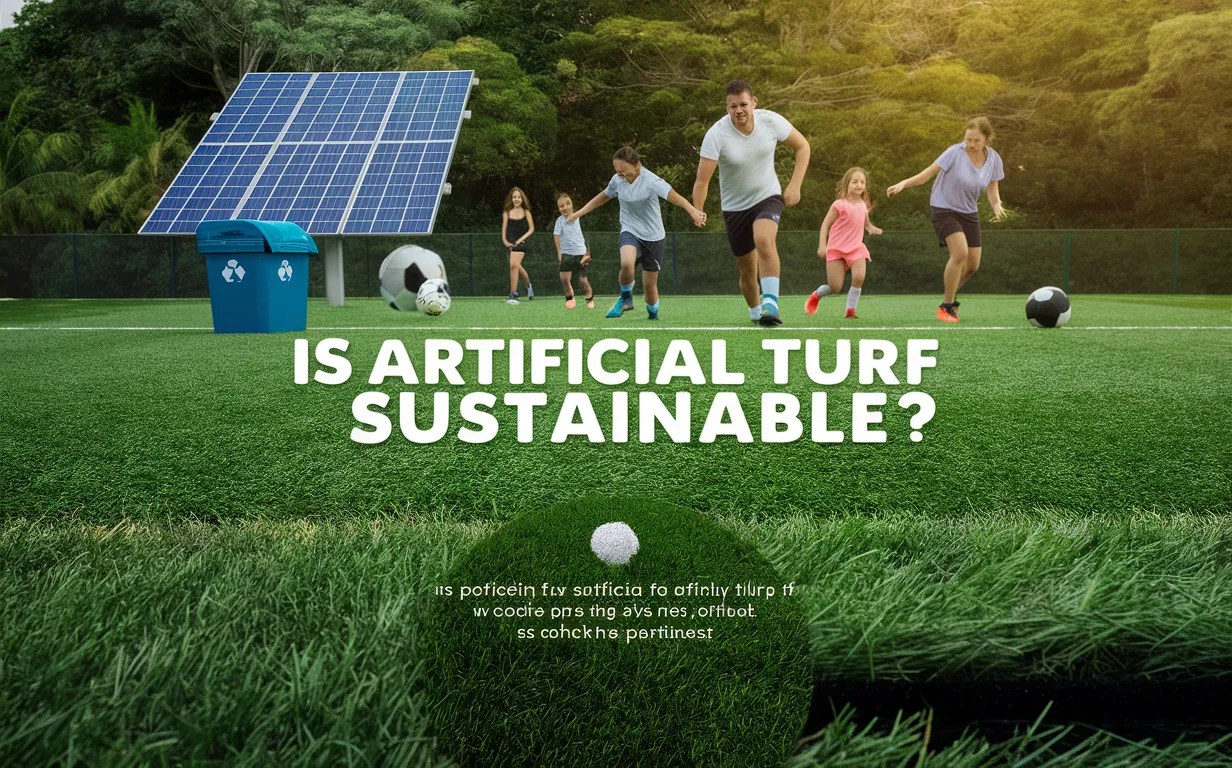Artificial turf is resistant to wear and easier to install and maintain than natural grass. Unlike natural grass, it does not require fertilizer, pesticides, or regular watering. This makes it highly sustainable. If you are considering installing artificial turf in your home or commercial property, here are eight eco-friendly benefits:
Reduces Water Usage
Artificial turf requires little to no water, making it a sustainable solution for drought-prone areas. You may need to occasionally hose down your synthetic lawn to remove dust and dirt. The turf remains fully functional without water, lowering your water bill and usage.
Does Not Use Chemicals
Because it does not grow, turf does not need herbicides, pesticides, fertilizers, and other chemical products. Synthetic grass is also naturally pest- and disease-resistant. Its non-reliance on chemicals limits the release of nitrous oxide gas into the air, which agricultural products produce. It also protects you and your pets from chemical exposure and the soil and water sources from leeching chemicals.
Reduces Noise
You do not need to mow turf. During manufacturing, turf producers size the synthetic grass to the ideal size for your lawn. This limits the frequency with which you use a mower, reducing noise. If the turf needs cleaning, an occasional leaf blower can be used, but the sound is significantly reduced due to its short duration.
Protects the Air
Installing man-made turf instead of natural grass limits air pollution. Because mowers emit smoke, which includes carbon dioxide, the lack of mowing that follows installing synthetic grass lowers your carbon emissions. It also saves fuel. According to a Princeton Student Climate Initiative report, lawn maintenance equipment uses 800 million gallons of gasoline annually and spills an additional 17 million gallons.
Long-Term Durability
Artificial turf is manufactured from synthetic fibers. The material, designed to resemble natural grass, includes nylon, polypropylene, polyethylene, or a combination of two of the three. It is designed to withstand heavy foot traffic, tearing, and fading.
Holding the fibers together is usually a component known as infill. Manufacturers pour infill between the grass blades to allow drainage, keep the blade straight, and provide a cushion. Infill is made from several materials, including:
- Zeofill
- Pea gravel
- Silica sand
- Acrylic sand
- Walnut shell
- Crumb rubber
- Polypropylene
- Polyethylene
- Produces Less Waste
Artificial lawns produce little to no waste. Because artificial grass is made from non-biodegradable synthetic fibers, it does not peel, break, or shed. This means it does not produce by-products like grass clippings and chemical residues.
Made from Recyclable Materials
The materials used to make artificial turf, such as nylon, polypropylene, and polyethylene, can be recyclable. Rather than dispose of them, you can repurpose them at the end of their shelf life. Some manufacturers offer recycling services, helping you properly dispose of your artificial lawn responsibly. Local recycling centers may also find use for worn-out turf.
Controls Soil Erosion
Artificial turf is usually installed over a drainage system. This system slows down water movements across the soil, limiting water runoff. Water moving slowly across soil systems is less likely to erode the soil. This protects the soil beneath your artificial lawn, trapping its nutrients and maintaining its quality should you ever want to plant natural grass again.
Reduced soil erosion also protects waterways from siltation and sedimentation. When soil is carried away in water, it can be deposited in water sources. Soil deposits may disrupt aquatic life and contaminate water. Man-made turf drainage systems are made from non-biodegradable material that is also resistant to erosion.
Install Artificial Turf for a More Sustainable Lawn
Artificial turf is sustainable because it does not require watering, mowing, or maintenance. You do not need to fertilize, replant, or weed a synthetic grass lawn. Synthetic grass is also more resistant to the elements and can withstand heavy foot traffic and bad weather. If you are ready to experience these and other benefits, contact a turf supplier today to explore your options.
Stay in touch to get more updates & news on Chicago Heading !

